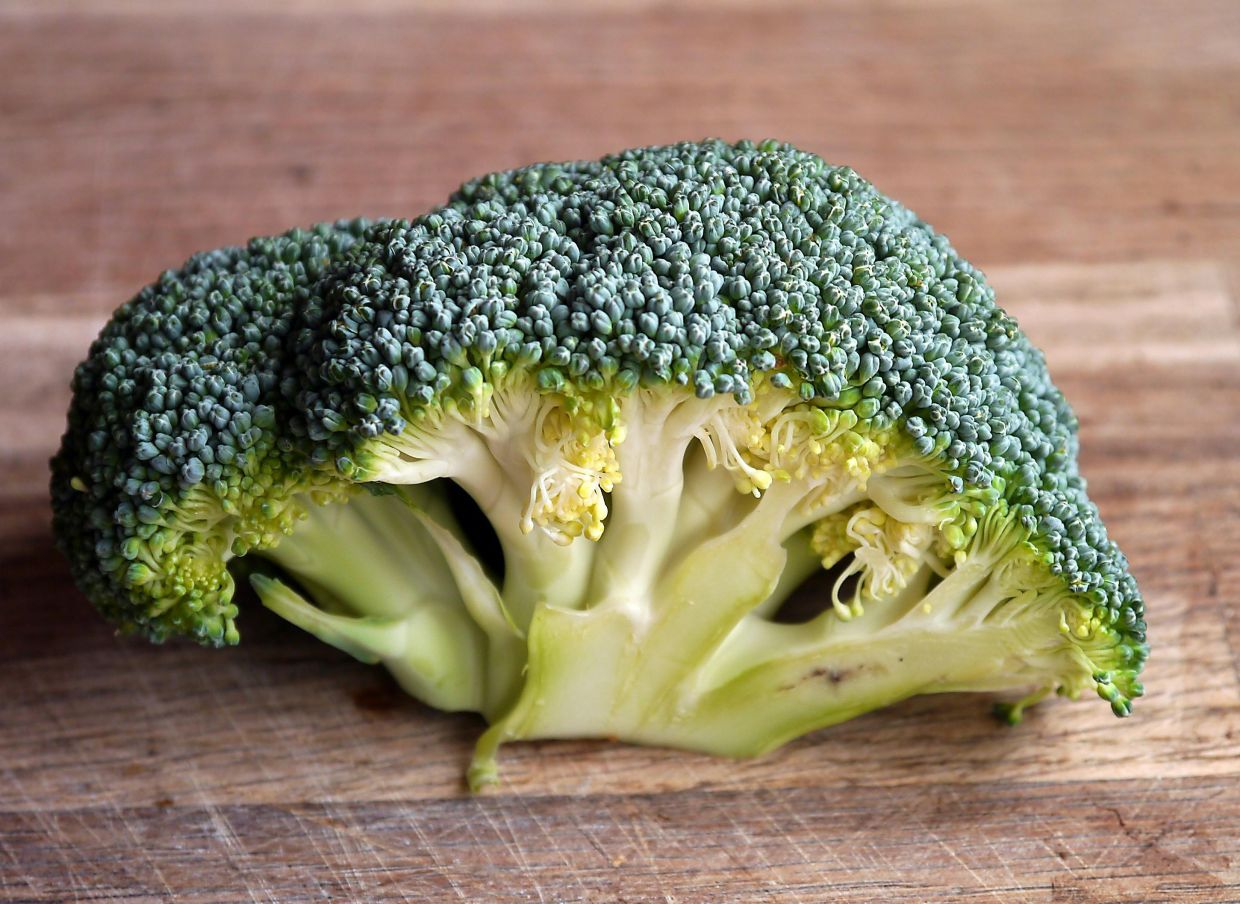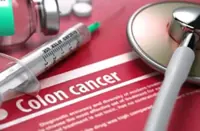Appropriate screening is an important part pf colorectral cancer prevention. — 123rf
The progression of colorectal cancer (CRC) is an intriguing though somewhat complex process, but understanding it is crucial to appreciate why this disease must never be underestimated.
It also reveals how easily the delicate balance of our body’s biological systems can be disrupted, leading to disease.
The lining of the colon and rectum is a dynamic environment where epithelial cells are constantly renewed through a finely balanced cycle of division, specialisation (differentiation), and programmed cell death (apoptosis).
This equilibrium, maintained by complex molecular signalling networks, ensures tissue stability (homeostasis).
CRC arises when this balance is disrupted, usually by the accumulation of genetic mutations that gradually transform normal cells into malignant tumours.
Understanding this multi-step process provides critical insights into prevention, early detection, and targeted treatment strategies for CRC.
APC mutation and Wnt pathway dysregulation
The journey to CRC commonly begins with a mutation in the “adenomatous polyposis coli” (APC) tumour suppressor gene, which is implicated in around 80% of CRC cases.
Tumour suppressor genes normally act as crucial brakes on uncontrolled cell growth, and their inactivation removes essential safeguards against tumour formation.
The APC protein plays a central role in the “Wnt” (pronounced “wint”) signalling pathway, a curious evolutionarily conserved gene-based system that regulates fundamental cellular processes, including proliferation, differentiation, and survival.
In a healthy cell, APC forms part of a “destruction complex” alongside other proteins such as Axin, GSK-3β, and CK1. This complex applies the phosphate group PO3 to a protein called β-catenin, marking it for degradation by the proteasome (the cell’s protein “recycling machine”). β-catenin is involved in cell growth, differentiation, and development.
By degrading β-catenin and keeping levels low, healthy cells prevent inappropriate activation of growth-promoting genes. This is the normal Wnt pathway.
However, when APC is mutated, this regulatory mechanism fails. The defective APC protein cannot assemble the destruction complex, allowing β-catenin to survive and accumulate.
Excess β-catenin migrates to the nucleus, where it binds with genetic switches called “TCF/LEF transcription factors”. This binding activates a series of cell events that triggers uncontrolled proliferation.
This includes upregulation of genes such as MYC and Cyclin D1, which accelerate cell division cycles, and production of a protein called Survivin, which inhibits apoptosis. This aberrant overactive Wnt pathway is a fundamental driver of CRC.
The name “Wnt” itself is a fascinating primordial artifact, combining “Wingless” (a gene essential for embryonic development of Drosophila fruit flies) and “Int-1” (a mouse gene linked to viral-induced mammary tumours).
When researchers discovered that these genes were functionally related, the hybrid term “Wnt” was coined in the early 1990s, highlighting the pathway’s primordial evolutionary heritage millions of years before the family Hominidae (which includes humans and other primates) existed.
The adenoma-carcinoma sequence
The initial APC mutation leads to the formation of small, benign growths called “polyps”, particularly adenomatous polyps, which are considered pre-cancerous growths.
Not all polyps will progress to cancer, but too many of them certainly can do so. Polyps represent the first anatomical manifestation of the adenoma-carcinoma sequence – the stepwise transformation from normal mucosa (the lining of the colon) to invasive carcinoma.
Within these early polyps, several key cellular and molecular changes occur.
The loss of APC-mediated control results in excessive cell division, while defects in apoptotic pathways allow abnormal cells to survive too long.
Furthermore, some cells lose their specialised functions and revert to more primitive states with no valid functions.
Then cells begin to exhibit weakened adhesion properties due to disruptions to their adhesion protein molecules.
This loosens them from their normal tissue anchors and increases their ability to spread, thus setting the stage for future invasion of other cells/organs.
Crucially, the tumour microenvironment actively participates in this process.
Even from an early stage, surrounding supportive tissue (known as stromal cells), immune cells, and cell supporting structures called the extracellular matrix (ECM) undergo changes that promote tumour progression. For example:
• Cancer-associated fibroblasts release growth factors and remodel the ECM, aiding tumour expansion.
• Immune cells, particularly regulatory T cells and tumour-associated macrophages, create an immunosuppressive environment that shields the growing tumour from surveillance by the normal immune system.
• Angiogenesis, the formation of new blood vessels, is stimulated to supply the developing adenoma with oxygen and nutrients.
These interactions underscore that CRC is not merely a disease of epithelial cells but a systemic disruption involving multiple cell types and signalling networks.
Accumulating genetic errors
The transition from benign polyp to invasive cancer is driven by the accumulation of additional mutations in critical pathways, such as the MAPK/ERK pathway, the PI3K/AKT pathway, and the TGF-Pathway.
The ways in which the pathways are disrupted by mutations vary but ultimately they all lead to the uncontrolled proliferation and survival of abnormal cells.
Additionally, mutations affect an important protein called TP53. Known as the “guardian of the genome,” TP53 is a special protein which triggers apoptosis in damaged cells in response to signals of cellular DNA abnormalities.
Mutations causing loss of function of TP53 permits survival of genetically unstable cells, accelerating tumour progression. Over half of all cancers are found to be due to TP53 inactivation.
As mutations build up, polyps become increasingly dysplastic – showing abnormal cell structures and nuclei. Eventually, some cells gain invasive abilities, breaking through the basement membrane and infiltrating deeper into the colon wall.
Defining malignancy
The earliest stage of CRC is carcinoma in situ (Stage 0), and describes cancer cells confined to the epithelial layer.
At this point, the disease is highly treatable, often curable with local excision. However, as genetic instability increases, cells develop traits that enable invasion. The medical terms for such invasive progression are:
•Epithelial-to-Mesenchymal Transition: Cells lose their normal functions, become irregular, and start to wander around.
•Matrix Metalloproteinases (MMPs): Enzymes known as MMPs degrade proteins which maintain the surrounding tissues, clearing a path for invasion.
•Angiogenic switch: Tumours secrete a protein called “vascular endothelial growth factor” to recruit new blood vessels, supporting further growth.
Once the tumour breaches the muscles in the intestinal tract, the risk of metastasis increases exponentially. Stage 1 is when the “muscularis mucosa” is breached, and Stage 2 is when the “muscularis propria” is compromised. Stage 3 is when the cancer has gone beyond the inner layers of the colon or rectum and has spread to nearby lymph nodes.
And Stage 4 is when the cancer has spread to distant organs or tissues beyond the colon or rectum, such as the liver, lungs, spine, etc. The prognosis for Stage 4 CRC is very poor, with less than 15% survival rate over 5 years.
Subtypes of CRC
Because CRC can arise through different mechanisms and pathways, genomic studies classify the diseases into several subtypes, defined by their molecular defects:
1.Chromosomal Instability (CIN) Pathway: Characterised by abnormal chromosome numbers, deletions or amplifications, and mutations in proteins such as APC, KRAS (Kirsten rat sarcoma), and TP53. This accounts for around 85% of CRC cases.
2.Microsatellite Instability Pathway: Caused by defective DNA mismatch repair (eg, mutations in the MLH1, MSH2 genes), leading to hypermutation. Common in Lynch syndrome.
3.CpG Island Methylator Phenotype: This is a complicated process, but can be summed up as protective genes getting switched off by chemical modifications in their DNA. This epigenetic silencing contributes to tumour development and progression.
These subtypes have major clinical implications, particularly for immunotherapy and specialist targeted therapies.
Early detection is critical
A major challenge of CRC is its long asymptomatic early phase. Symptoms often appear only after significant progression, and may include blood in stool (not always visible but detectable via a FIT), persistent and/or alternating diarrhoea/constipation, pencil-thin stools, fatigue (from anaemia), unexplained weight loss, etc.
There are many other possible symptoms but they are not always debilitating and hence may not provoke any action.
By the time significant symptoms arise, the cancer may already be at an advanced stage, underscoring the importance of early screening.
Prevention and early detection
CRC is often described as highly preventable, due to its slow progression. However, it is important to note that this statement is true ONLY if precursors to the disease (eg, polyps) are diagnosed and removed in time. The optimal key preventive strategies for normal people include the following:
1. Screening
• Stool-based tests (eg, FIT) detects blood in the stool; recommended every one to two years.
• Colonoscopy is the gold standard for visualisation and polyp removal; advised every five to 10 years for average-risk individuals starting at age 45–50.
• CT colonography is a radiologic alternative for those unable to undergo colonoscopy.
2. Lifestyle modifications
• A diet high in fibre (25–30 g/day), cruciferous vegetables, and omega-3s lowers risk. Processed meats and excessive alcohol raise risk.
• 150+ minutes/week of moderate activity lowers risk by 20–30%.
• Obesity (especially visceral fat) is linked to higher CRC incidence.
• Tobacco use doubles the risk of CRC death.
Summary
Colorectal cancer develops over years through an accumulation of genetic and epigenetic faults, shaped by interactions with the tumour microenvironment.
Its protracted, pre-symptomatic phase offers a critical window for early detection and prevention.
Timely screening, coupled with lifestyle modifications, can intercept the adenoma-carcinoma sequence, reducing CRC incidence and mortality.
Ultimately, it is our responsibility to screen ourselves appropriately – beginning with regular FITs and following up with colonoscopy when needed.
By doing this collectively and consistently, we can move towards a future where CRC becomes rare, rather than the second largest cause of cancer deaths worldwide.
The views expressed here are entirely the writer’s own.








